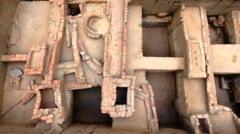In the early 1900s, the forgotten Indian explorer Rakhaldas Banerjee made a historical mark by uncovering Mohenjo-daro, the largest city of the Indus Valley Civilization located in present-day Pakistan. Often shrouded in controversy, Banerjee toiled under British colonial rule as an archaeologist for the Archaeological Survey of India (ASI). His groundbreaking excavations brought to light invaluable artifacts, yet he remains a lesser-known figure compared to his contemporaries.
Banerjee, born in 1885 in Bengal, was compelled by the medieval monuments that sparked his passion for history. By 1910, he had joined ASI and quickly ascended to superintending archaeologist status. His journey took him to Mohenjo-daro in 1919, where he uncovered ancient urban settlements dating back 5,300 years. Despite this monumental find, his reports were never published, and disputes arose regarding his work’s credit.
Accusations of misconduct plagued Banerjee, including failure to follow protocols and mismanagement of funds. These controversies often overshadowed his contributions, leading historians to argue that his role was downplayed. In 1924, with funding drying up and embroiled in impediments, Banerjee was reassigned to eastern India, further distancing him from Mohenjo-daro.
After a rocky tenure with ASI, including a scandal involving idol theft that he was ultimately cleared of, Banerjee left the organization in 1927 and transitioned to academia. However, his lavish lifestyle contributed to financial woes, and he passed away at the young age of 45. Today, Rakhaldas Banerjee stands as a significant yet overlooked figure in world history, reminding us of the complex tapestry of exploration and discovery.





















